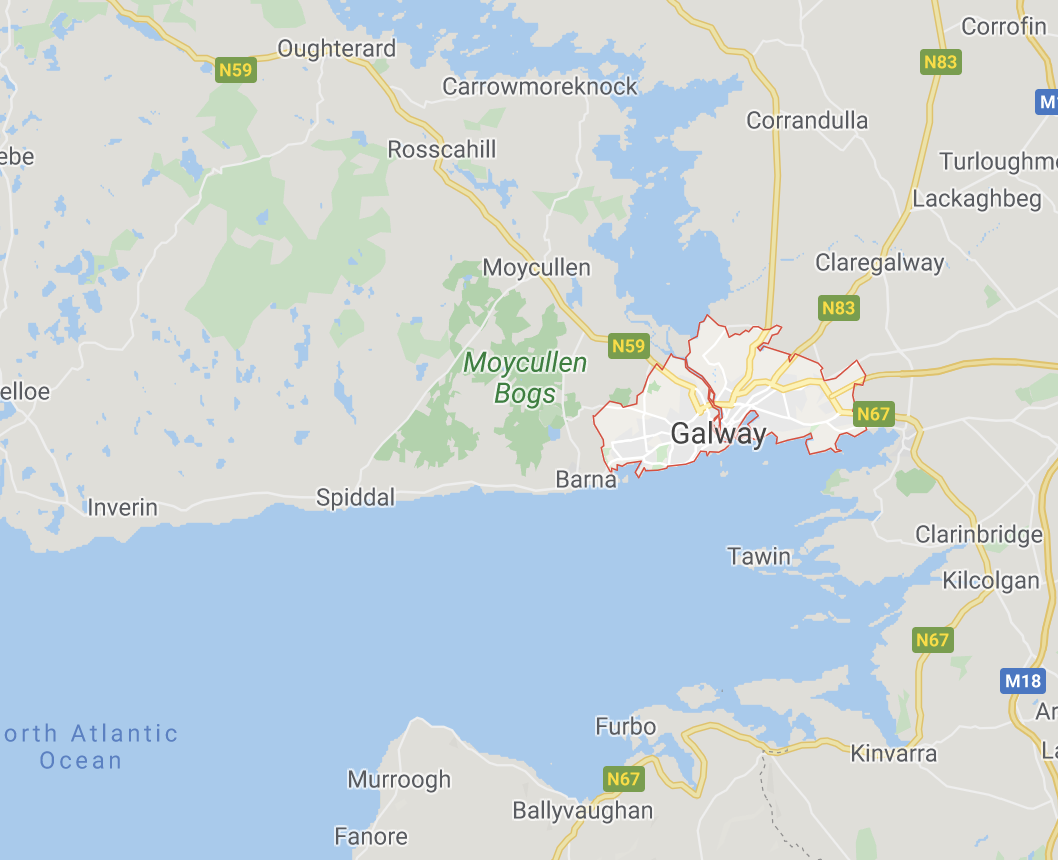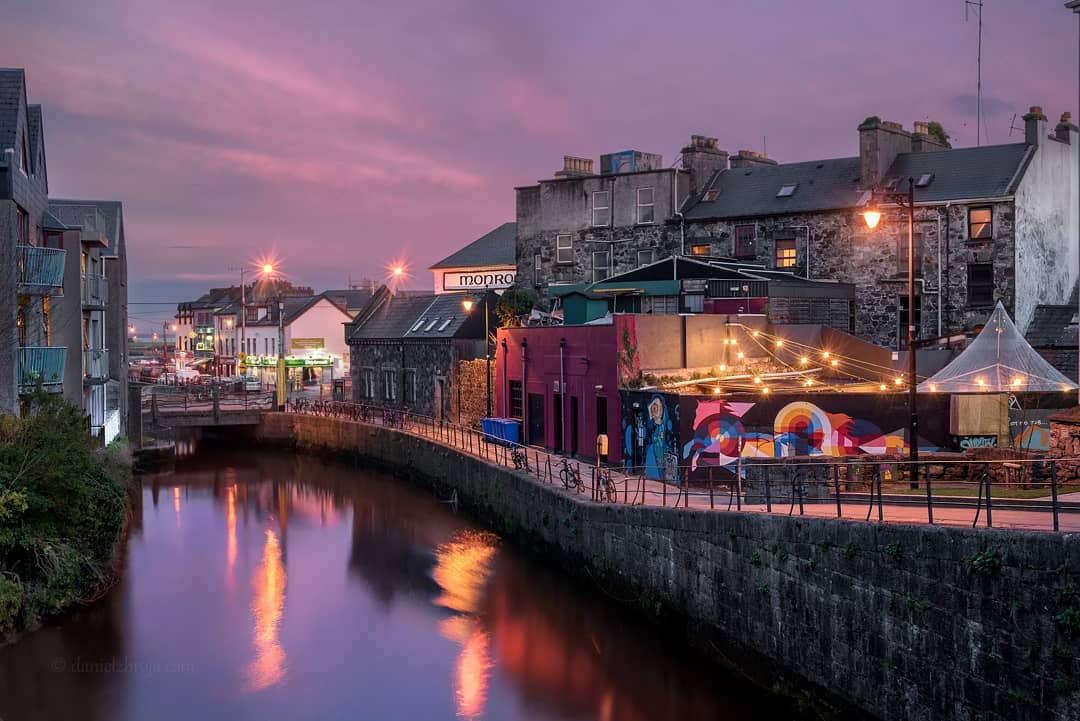
Galway City lies on the River Corrib between Lough Corrib and Galway Bay.
The city also bears the nickname “City of the Tribes” because of the fourteen merchant families called the “tribes of Galway” who led the city in its Hiberno-Norman period.
Galway is renowned for its vibrant lifestyle and for hosting numerous festivals, celebrations and events such as The Galway Arts Festival.
Dún Gaillimhe, a fort around which a settlement grew, was constructed in 1124, by the King of Connacht.
In 1477, Christopher Columbus documented visiting Galway, possibly stopping off on a voyage to Iceland or the Faroe Islands.
The city thrived on international trade, and in the Middle Ages, it was the principal Irish port for trade with Spain and France.
The most famous reminder of those days is known as the Spanish Arch, constructed during in 1519–20.
At the end of the 17th century the city supported the Jacobites in the Williamite war and was captured by the Williamites shortly after the Battle of Aughrim in 1691. The great families of Galway were ruined.
The city suffered further under the potato famines of 1845–1852, and it did not fully recover until the late 20th century.
If you would like to add any information or to advertise your business, please get in touch to feature on our website and in our ‘WanderPast the Wild Atlantic Way’ guide.
